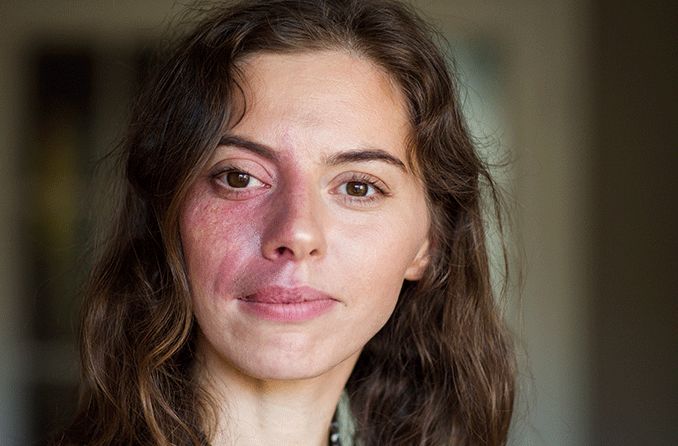What are the symptoms of Sturge-Weber syndrome?
Sturge-Weber syndrome (SWS) is a rare neurological and cutaneous disorder that typically presents with a combination of symptoms. The symptoms can vary widely among individuals but commonly include:
Cutaneous Symptoms
- Port-Wine Stain: A distinctive, flat, pink or red birthmark on the face, often on one side, typically along the distribution of the trigeminal nerve (the area served by one of the facial nerves).
Neurological Symptoms
- Seizures: Frequently occurring, often starting in infancy or early childhood.
- Developmental Delay: Challenges with reaching developmental milestones, such as motor skills or cognitive abilities.
- Cognitive Impairments: Difficulties with learning and memory loss, or other intellectual disabilities.
- Hemiparesis: Weakness or paralysis on one side of the body, which can affect motor skills and movement.
Ocular Symptoms
- Glaucoma: Increased pressure in the eye, which can lead to vision problems.
- Visual Field Defects: Loss of vision in specific areas of the visual field.
Other Symptoms
- Migraine: Severe headaches that can be recurrent and are sometimes associated with the syndrome.
- Behavioral Issues: Behavioral problems or psychiatric symptoms may be present.
The severity of symptoms and the extent of involvement can vary greatly among individuals. Diagnosis typically involves a combination of clinical evaluation, imaging studies (such as MRI), and sometimes genetic testing. Early diagnosis and a multidisciplinary approach to treatment can help manage symptoms and improve quality of life.
What are the causes of Sturge-Weber syndrome?
Sturge-Weber syndrome (SWS) is a congenital condition that arises from a combination of genetic and developmental factors. The exact cause of SWS is not fully understood, but it is believed to result from a somatic mutation in the GNAQ gene, which affects the development of blood vessels. Here’s a more detailed look at the potential causes:
Genetic Factors
- Somatic Mutations: SWS is associated with mutations in the GNAQ gene, which occur in cells of the affected tissue (not inherited from parents). These mutations lead to abnormal blood vessel development and are specific to the affected areas.
Developmental Factors
- Abnormal Blood Vessel Formation: The syndrome involves the formation of abnormal blood vessels, particularly in the brain and skin. This leads to the characteristic port-wine stain and neurological symptoms.
Not Inherited
- Non-Inherited Condition: SWS is generally not inherited in a classical Mendelian manner. Instead, it is considered a sporadic condition, meaning it occurs randomly due to genetic mutations that are not passed from parent to child.
Key Features
- Port-Wine Stain: This birthmark is due to the abnormal development of blood vessels in the skin.
- Neurological Issues: Abnormal blood vessels in the brain lead to neurological symptoms such as seizures and cognitive impairments.
Understanding that SWS is related to specific genetic mutations that occur during early development helps in diagnosing and managing the condition, but more research is needed to fully elucidate the underlying mechanisms.
What is the treatment for Sturge-Weber syndrome?
The treatment for Sturge-Weber syndrome (SWS) is multidisciplinary and aimed at managing symptoms and improving quality of life, as there is no cure for the syndrome. Treatment strategies include:
Neurological Management
- Antiepileptic Medications: To control and prevent seizures, which are a common symptom of SWS.
- Cognitive and Developmental Therapy: To address developmental delays and cognitive impairments, including speech therapy, occupational therapy, and physical therapy.
Ocular Management
- Regular Eye Exams: To monitor and manage glaucoma, a common complication of SWS.
- Medications or Surgery: To control intraocular pressure and treat glaucoma as needed.
Skin Management
- Laser Therapy: To reduce the appearance of the port-wine stain and manage related vascular lesions. This can help with cosmetic concerns and potentially reduce related symptoms.
- Dermatological Care: Regular monitoring and treatment for any associated skin issues or complications.
Behavioral and Psychological Support
- Behavioral Therapy: To address behavioral and emotional challenges, which may arise due to neurological and developmental issues.
- Psychological Counseling: For patients and families to cope with the psychological impact of the syndrome.
Supportive Care
- Educational Support: Special education services to help with learning difficulties and developmental delays.
- Family Support and Counseling: To assist families in managing the challenges of living with SWS.
Regular Monitoring
- Medical Follow-Up: Ongoing evaluations by a team of specialists, including neurologists, ophthalmologists, dermatologists, and developmental pediatricians, to monitor and address the various aspects of the syndrome.
Research and Clinical Trials
- Participation in Clinical Trials: Some patients may benefit from participating in research studies to explore new treatments and therapies.
A personalized approach to treatment, coordinated by a team of healthcare professionals, can help manage the diverse symptoms of Sturge-Weber syndrome and improve overall quality of life.

Leave a Reply
You must be logged in to post a comment.